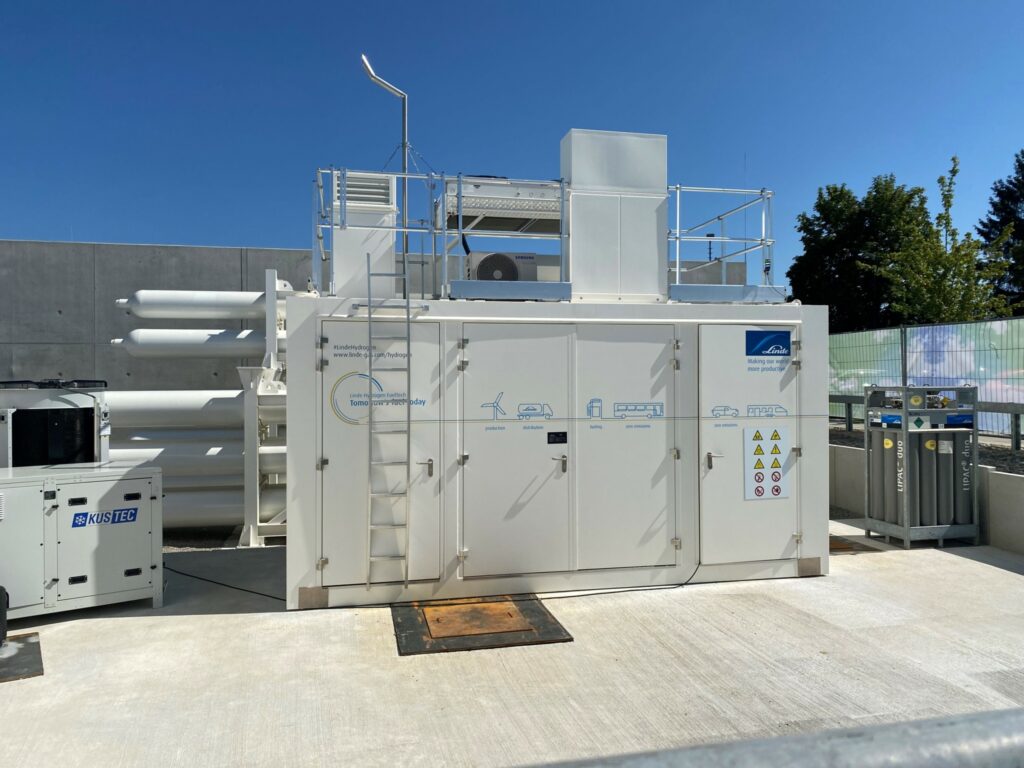Commercial hydrogen fueling station in Germany could provide blueprint for North America
During a recent visit to Germany, North American automotive and trucking journalists had a chance to attend the opening of Bavaria’s largest hydrogen truck and bus filling station, which could offer a preview of what the first such North American stations will look like.
More than 100 project partners and guests attended the event in Hofolding, Germany. The Linde-built station will fuel up to 10 municipal buses as well as trucks, with a capacity of up to 300 kg of hydrogen per day at 350 bar.

The swap-body concept allows the operators to quickly replenish supply by simply swapping out the trailer that houses the hydrogen tank. Each trailer can deliver 1,250 kg of hydrogen, enough to fuel at least 25 trucks and buses.
The Solaris buses that will be the first to use the station are expected to get about 350 km of range from each fill.
Thomas Zorn, managing director of hydrogen supplier Tyczka Hydrogen, noted the trailers will be swapped out every one to two weeks. It took nearly two years for the entire project to come to fruition, he added.
“Today, if you make one mistake, it may delay you for three months,” he said.
Christoph Gobel, district administrator for the Munich County District, said the station will likely be used to fuel trash and winter service trucks. The station will be open to the public as well as the municipal fleet.
“It’s government funded so it needs to be open to the public and yes, we do have people interested in using it,” he said through a translator.
Dr. Tobias Brunner, managing director of Hynergy, said electrolyzers that separate hydrogen and oxygen molecules to produce green hydrogen are “the Swiss army knife” of the “energiewende,” German for energy transition.
Not only can electrolyzers produce hydrogen, they also create usable byproducts such as heat and oxygen. The cost of producing hydrogen varies widely around the world, with Tibet being the cheapest due to its continuous supply of wind and sun.
The hydrogen economy will require the transportation of hydrogen across vast distances, often by ship. “Many markets can only be reached by ship,” said Brunner.
Despite the challenges, he said hydrogen has an essential role to play in decarbonizing transportation.
“If we don’t do green hydrogen, we lose 20-25 years in decarbonization,” he said.
And commercial vehicle transportation will be expected to lead the way, as the volume of hydrogen throughput can justify the cost of building hydrogen stations that can be used by both trucks and passenger vehicles – albeit at different dispensing pressures.
Have your say
This is a moderated forum. Comments will no longer be published unless they are accompanied by a first and last name and a verifiable email address. (Today's Trucking will not publish or share the email address.) Profane language and content deemed to be libelous, racist, or threatening in nature will not be published under any circumstances.